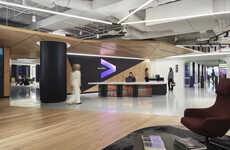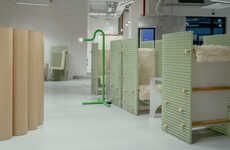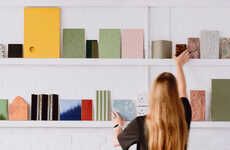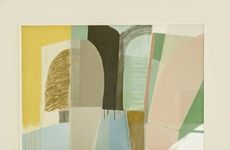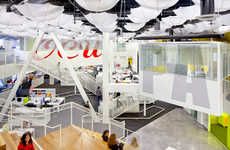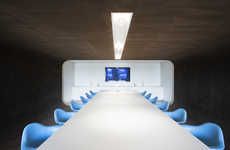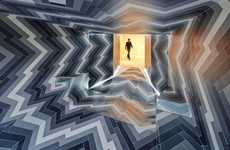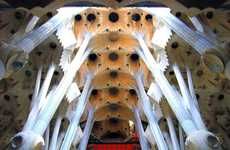
The Red Town Office's Top Floor Acts as One Continuous Desk
Meghan Young — June 25, 2011 — Art & Design
References: enrico-taranta & contemporist
The Red Town Office is not your typical workspace. This atypical interior design is a reflection of the ongoing creative process within this particular studio. Considering that it was designed by its own resident business really shows that the company has created a meaningful space that encourages the work that its teammates produce.
Designed by Taranta Creations, the Red Town Office is named so because of the red motif running throughout it. Located in Shanghai, China, it was originally a metal factory that boasted a diagonal steel structure. This, however, made it hard for the company to have two floors as they wished, so they had to get creative.
The Red Town Office's top floor is high enough (or low, depending on how you want to think of it) to also act as one continuous desk, making the cubicles appear like recesses within it.
Designed by Taranta Creations, the Red Town Office is named so because of the red motif running throughout it. Located in Shanghai, China, it was originally a metal factory that boasted a diagonal steel structure. This, however, made it hard for the company to have two floors as they wished, so they had to get creative.
The Red Town Office's top floor is high enough (or low, depending on how you want to think of it) to also act as one continuous desk, making the cubicles appear like recesses within it.
Trend Themes
1. Atypical Office Design - There's a growing trend in creating unique and unconventional office spaces that reflect the company's values and encourage creativity.
2. Creative Workspace - Companies are realizing the importance of providing a meaningful space that inspires and supports the work produced by their employees.
3. Adaptive Space Utilization - Designing spaces that can serve multiple purposes, such as the top floor of the Red Town Office acting as a continuous desk, is a disruptive innovation opportunity for workplaces.
Industry Implications
1. Interior Design - The interior design industry can explore innovative ways to create unique and inspiring office spaces that foster creativity and productivity.
2. Architecture - Architects can seize the opportunity to design adaptable office structures that meet the evolving needs of modern businesses.
3. Furniture Manufacturing - There is potential for furniture manufacturers to develop flexible and modular office furniture solutions that can adapt to unconventional office designs.
4.9
Score
Popularity
Activity
Freshness





